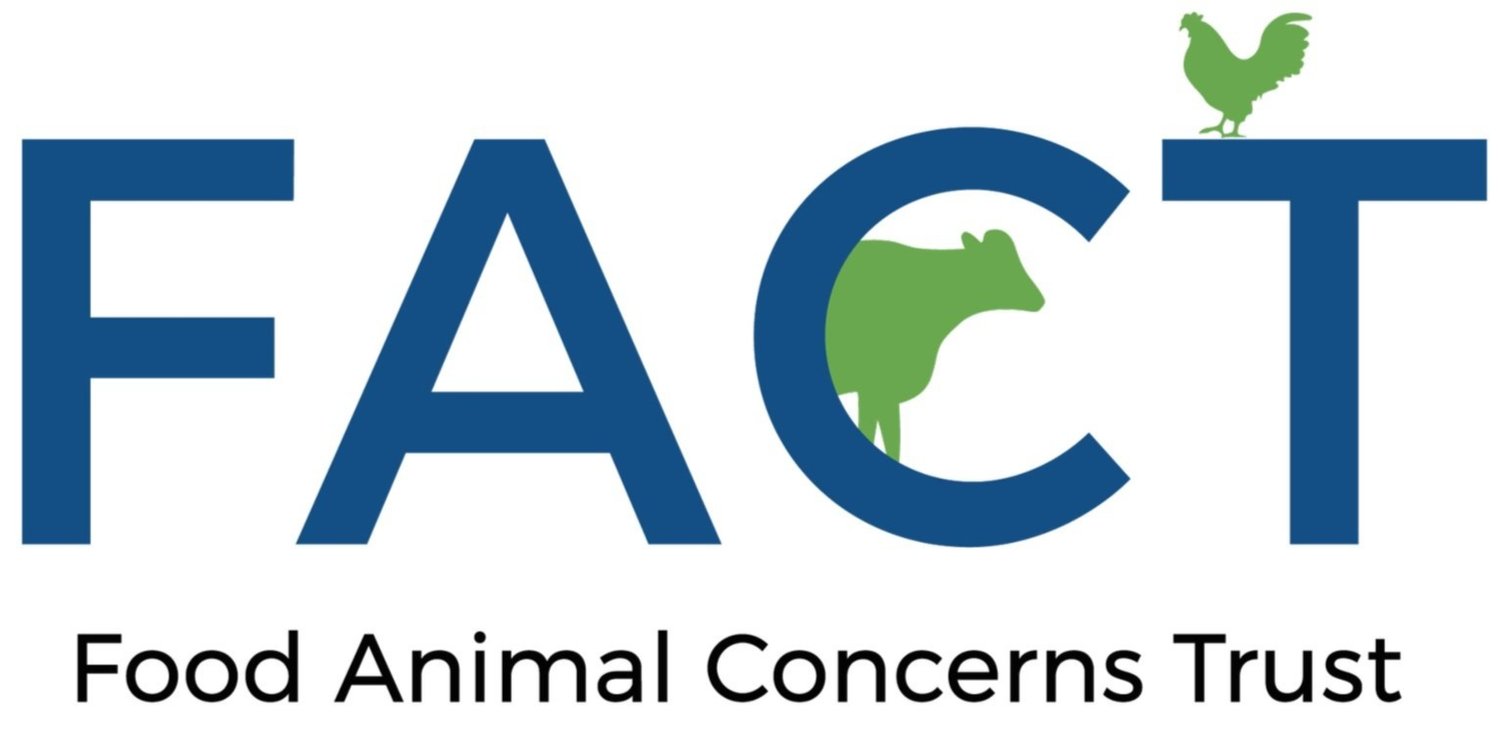Healthy Soil for Healthy Animals
By Larissa McKenna, Humane Farming Program Director
One of FACT’s guiding principles is that all farm animals deserve to be cared for in a healthy and humane manner, with compassion and respect. To achieve this, we partner with and invest in livestock and poultry farmers to help them raise their animals outdoors on well-managed pasture.
Many animal welfare benefits are associated with regenerative, pasture-based systems. Animals living and cared for on well-managed pasture can move freely and engage in natural behaviors. This means that pigs can root around and wallow in the mud; chickens can spread their wings and bathe in the dust; and cows can socialize with their herd mates and spend most of their time grazing on native grasses. Pasture-raised animals have also shown lower stress, disease, and lameness, as well as greater fertility and fewer reproductive problems.
But what makes this entire production system possible? The answer lies beneath our feet – soil. Healthy soil is fundamental to humane farming. The role soil plays in animal welfare may not be completely obvious, so let’s dig a little deeper.
Healthy, productive soil is highly active. It maintains a complex ecosystem of its own, teeming with root and plant matter – both living and decomposed – as well as bacteria, fungi, earthworms, and a multitude of other organisms. The soil feeds pasture plants with nutrients essential for growth. Soil also has specific characteristics to the region it is located, which is why planting native grasses is important – the soil is designed to nourish what is found locally. Eventually these forages and grasses provide ruminant animals with the nutrients they need to thrive. To ensure a high level of welfare for animals to graze and live on pasture, we need to care for the soil as well.
Pasture-based animal production helps improve soil health and fertility if managed properly. One effective approach farmers take is “Management Intensive Rotational Grazing.” Using this practice, farmers frequently move – or rotate – their animals to new pasture. In order to have many parcels of fresh grass available, farmers use fencing to subdivide larger areas of pasture into smaller “paddocks.” The animals are allowed to eat the plants in that particular paddock. As they graze, they distribute their manure across the land, which in turn fertilizes the soil. These nutrients are eventually cycled back to the pasture plants.
An important variable in this system is knowing when to move the animals to the next paddock. This must be done before the plants are grazed too short. In fact, most successful graziers will allow at least half of the leaves on the plants to remain uneaten and grass to remain several inches high. If pasture is “overgrazed” and too much of the green vegetation is consumed by the animals, root growth is severely stunted. Without healthy roots, the plants will not be able to bounce back and grow new leaves. The soil will ultimately suffer as well. Deep roots keep the soil from becoming too wet by drawing up excess water. This helps prevent run-off and soil erosion.
When the farmer determines that the plants have been sufficiently grazed, but not overgrazed, the animals are moved to the next paddock. Reaching a sufficient grazing level on a paddock may take several hours or several days, depending on the paddock’s size, the time of year, the amount and quality of available plants, and the herd size. The used paddocks then can rest, recover, and regrow so that they are ready for grazing later in the season. This feedback loop between the animals, the plants, and the soil can reap many benefits if managed properly.
Through our grants, scholarships, webinars, and mentorship program, FACT is helping farmers improve both animal welfare and soil health by focusing our efforts to have more animals raised outdoors, and by properly managing the land they call home.
